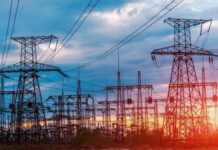If you’re wondering how they work, you’re not alone. The technology behind these devices is growing rapidly, and more people are turning to these alternative energy sources to protect their homes and property. Learn more about the different options, which include: Require a solar panel and power inverter, Work in shade, and use a rechargeable battery.
Requires a power inverter
A power inverter is a device that transforms the DC power from the solar panels to usable AC power. This device must be large enough to accommodate all the equipment being powered. In addition, it should have an efficiency that allows it to charge quickly. In order to make sure that your security cameras are running properly, the inverter should be powerful enough to provide enough power to the cameras.
The solar panels that power your monitoring devices must be installed in a place where they receive the most sunlight. The best placement for these devices is a south-facing wall or a high wall. Smaller cameras may not be able to receive sufficient light and may be overlooked by intruders.
The size of the solar power system depends largely on the power demands of the security equipment. This is the one factor that video surveillance designers can control. It is therefore advisable to compare different brands of video surveillance equipment to determine which has the least power requirement. The lower the overall power consumption of the equipment, the lower the cost of the system.
A sun-powered system can be grid-tied or un-grid-connected. A grid-tied system can access backup power from the utility grid to minimize peak load. This type of system can also enhance the electrical efficiency of the entire system. A power inverter is a device that converts the direct current from the reflective panel power to alternating current.
There are a variety of batteries that can be used in them. One option is a deep cycle lead acid battery, which has a lifespan of 2 to five years. Another option is a lithium-ion battery. These batteries are light and recharge quickly. However, these batteries can cost as much as 20 times more than a deep cycle battery.
Requires a solar panel
If you’re looking to add a solar-powered security camera system to your home, you’re probably wondering, “Does my security device require a reflective panel?” The answer to this question depends on the type of equipment you plan on using. Most devices and other wireless equipment require a 12VDC or 24VDC input. These devices can also operate with an AC power adapter.
In any case, if you’d like to run your security camera system using solar power, you’ll need a solar panel that can handle the load. The first step in installing a solar security camera system is to choose a location where the device will be installed. Choosing a location that is not located near a power line is a good idea if your security camera will be in a remote area.
You may want to consider a location that has access to natural power sources, such as the wind or rain. Solar-powered security camera systems are also a good option for homes where the electricity grid is not available or is too expensive. To properly size your sun-powered panel, you should know the average amount of sunlight your area receives on a daily basis.
Average daily sun-powered insolation is measured in kWh/m2 (https://sam.nrel.gov/forum/forum-general/362-definition-of-kw-m2.html), and peak sun hours are the hours during which solar power is at its highest. When planning the placement of your solar panel, keep in mind that you’ll want it in a location where it receives at least three hours of direct sunlight every day in order to charge sufficiently.
If you’re going to mount the solar panel on a wall, it’s best to position it in a south-facing spot where it will receive full sunlight for at least six hours each day. You’ll also need to consider the cable length of the solar panel. Using a Velcro strap for the cord can help to keep the cord from tangling and causing problems.

Works during a power outage
They are a great way to monitor your home or office without using a wired connection. This is especially useful if you live in a remote area or need to install the devices in a special location. These systems work on a grid of electrical contacts that capture electron activity when they are exposed to the sun’s rays.
They can be set up on the front or back of a home, but they will not work if a power outage strikes. Many devices do not have this feature, but the best way to make sure that your devices continue to work during a power outage is to install a generator in your home or business so that backing up your power is never a worry.
Not only will this allow you to monitor your property, it will also allow your security system to continue working. If you live in a place where sunlight is in short supply, you may be better off with a standard electrically powered security system. For example, Seattle has regular cloud cover, and winters in Portland are often dark.
However, there are also solar-powered camera systems that can work even during a power outage. In these cases, the images from these cameras will be less than ideal, but you can be sure that your home is protected. Another alternative is to install battery-powered cameras. These cameras use rechargeable batteries that run on solar power.
These cameras also have the option of a wireless backup battery. Most security cameras require a wireless network to function. Most of them will operate on a 2.4 GHz network, which you can learn about here. The 5 GHz version is also available, but most people don’t use it at home. Regardless, you need WiFi to record footage and transfer data from the cameras in order to free up physical disk space.





































